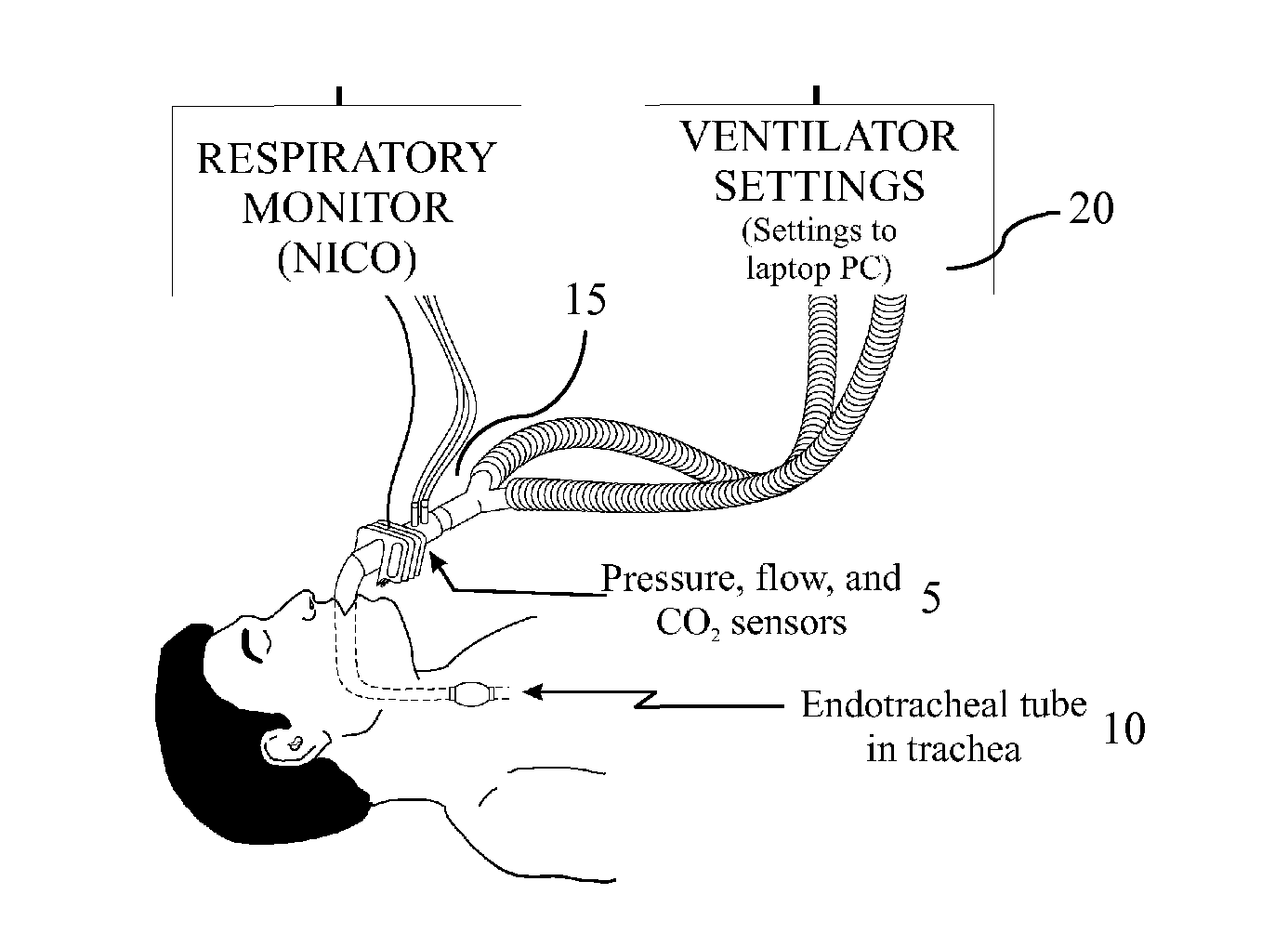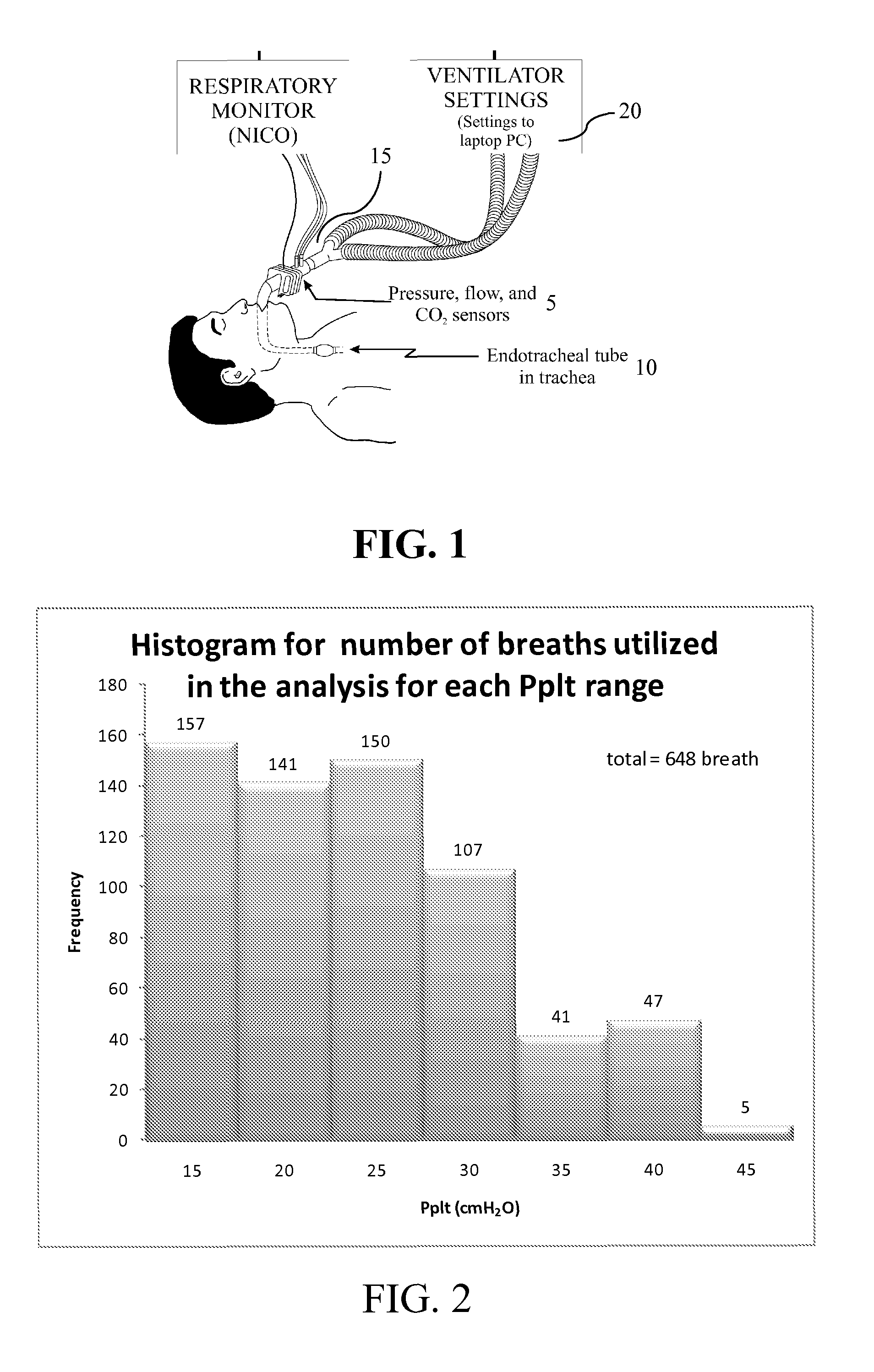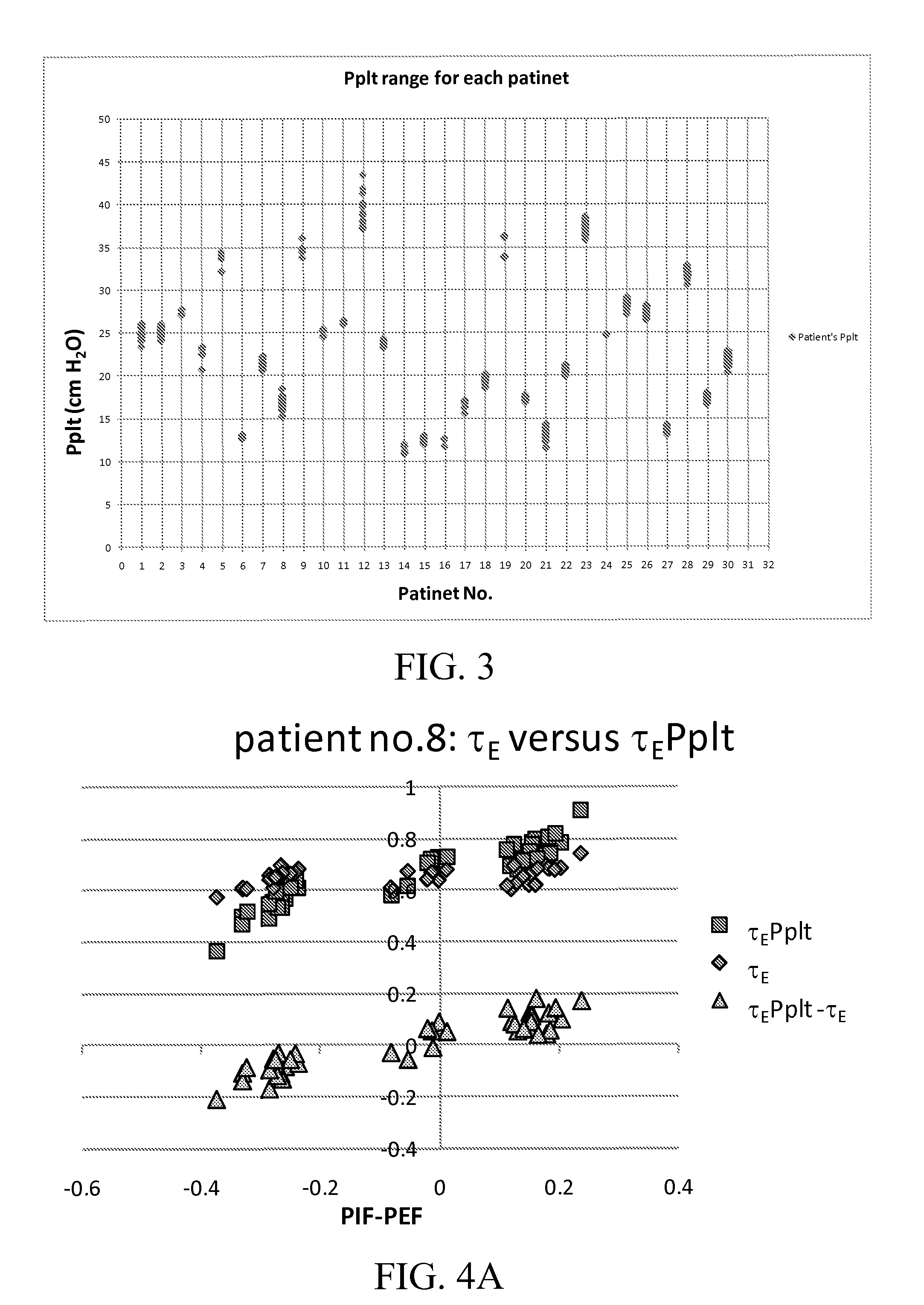System and method for assessing real time pulmonary mechanics
a real-time pulmonary mechanics and system technology, applied in the field of respiratory therapy and physiology, can solve the problems of inaccurate estimation of csub>rs /sub>and rsub>rs /sub>, affecting the accuracy of measured psub>plt, and unable to perform an eip, so as to achieve non-invasively accurate calculation and accurately determine other information.
- Summary
- Abstract
- Description
- Claims
- Application Information
AI Technical Summary
Benefits of technology
Problems solved by technology
Method used
Image
Examples
example 1
[0102]The subject systems and methods for accurately estimating in real time pulmonary mechanics based on monitored ventilation parameters was validated using a heterogenous population of thirty (30) adult patients in respiratory failure requiring mechanical ventilation, namely patients receiving positive pressure ventilation.
[0103]For each patient, Pplt was recorded in the intermittent mandatory ventilation (IMV) mode with inspiratory flow waveform and an end inspiratory pause of 0.5 second. Inspiratory flow rate recorded ranged between 0.5 to 1.0 L / s).
[0104]As illustrated in FIG. 1, data from a combined pressure / flow sensor 5 (NICO, Respironics) positioned between the patient endotracheal tube 10 and Y-piece 15 of the ventilator breathing circuit, were directed to a laptop computer 20 with software performing the methods described herein (Convergent Engineering) for measurement and recording of pressure, flow, and volume data. As illustrated in Table 1 below and FIGS. 2 and 3, Ppl...
example 2
[0111]Continuous and accurate estimates of Pplt and CRS using the τE from passive deflation of the lungs during PSV, without the need for IMV with EIP, were validated using a population of twenty-four (24) adult patients in respiratory failure requiring mechanical ventilation and receiving PSV.
[0112]The 24 adults consisted of 10 males and 14 females with ranges in age 56.1±16.6 yrs and weight 79.9±28.8 kg. They had heterogeneous causes of respiratory failure and were breathing spontaneously with PSV. PSV ranged between 5 and 20 cm H2O. Applying the same tidal volume, PSV and IMV with EIP were compared in the same patients. During PSV, Pplt and CRS were obtained by integrating the τE from the expiratory volume and flow waveforms. During IMV and EIP, Pplt was obtained from viewing pressure plateau of the airway pressure waveform at EIP. Data were analyzed using regression and Bland-Altman analysis; alpha was set at 0.05.
[0113]During PSV, Pplt and CRS from the τE method were 19.65±6.6 ...
PUM
 Login to View More
Login to View More Abstract
Description
Claims
Application Information
 Login to View More
Login to View More - R&D
- Intellectual Property
- Life Sciences
- Materials
- Tech Scout
- Unparalleled Data Quality
- Higher Quality Content
- 60% Fewer Hallucinations
Browse by: Latest US Patents, China's latest patents, Technical Efficacy Thesaurus, Application Domain, Technology Topic, Popular Technical Reports.
© 2025 PatSnap. All rights reserved.Legal|Privacy policy|Modern Slavery Act Transparency Statement|Sitemap|About US| Contact US: help@patsnap.com



